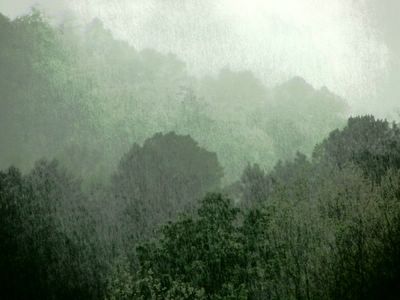
File this under "duh" if you will, but I need to acknowledge this out of fairness to
Rivendell, and as a means of providing information to others wondering just how much of an effect one's positioning on a bike can have on pedaling effort and speed. Earlier I described being considerably faster, particularly uphill, on the
Seven bicycle I have on loan in comparison to my
Rivendell Sam Hillborne. It was widely agreed that there were many factors involved in this difference - from frame geometry, to weight, to positioning. For some time now I'd been considering making changes to my
Rivendell, and finally it's been done - thus somewhat leveling the playing field between the two bikes, with interesting results.
You may spot a number of other alterations in these pictures, but for now I will talk just about the difference in positioning. Namely, the bike now has a longer stem (8 cm, instead of 6 cm as previously). The handlebars have been positioned slightly lower as well.

We've also reduced the amount of setback on the saddle by about 2 cm (not just by moving the saddle forward, but by replacing the seatpost). The overall effect is that my lean has increased by a small amount, my weight on the bike has shifted forward, and my hips are move directly above the cranks.
It's important to stress that I would not have found this position comfortable a year ago, so making these changes is not so much "admitting a mistake," as altering the bicycle's set-up to reflect my changing skill level and preferences. I very much find this position comfortable now - comfortable and fast.

We rode to Lexington, MA to try some hill intervals. I did not attach a saddlebag, so that I could get a sense of how the bike itself performs. And it performed well - albeit differently from the
Seven.
Here is my amateur description of what happens on the two bikes when I cycle uphill: The
Seven allows me to very easily "attack" a hill - to cycle up it at a fairly high speed, until I run out of steam toward the end and am forced to slow down. In comparison, the
Rivendell does not like to "attack" and forces me to slow down earlier. In its previous state, this slowing down happened almost immediately and drastically. Now it happens half way up, and the speed drop is considerably smaller. Cycling on flats, the new positioning makes the
Rivendellfaster to accelerate than previously. Not as fast as a racing bike of course, but I no longer feel as if I am sitting "behind the bike" unable use my weight efficiently.
Once I attach bags, that will no doubt slow it down some. But I have a strong feeling that the change in performance is due to the forward placement of my weight more than anything else - when I ride the bike now it feels inherently different - more responsive and more efficient. I am not trying to convert the
Rivendell to a
Seven and I am not considering taking it on paceline rides. I want to keep the wide tires, the fenders, the rack, the bags, the lighting - there is no compromise possible on that end, as these features are extremely useful to me. But the
Seven's positioning (and my enjoyment of that positioning) has most definitely affected my expectations in terms of performance, and I don't think I can go back to short stems and seatposts with generous setback. Not that there is any reason I should - It's all about what you are comfortable with at any given point in time.
 This might sound obvious to experienced cyclists, but I've discovered that good sunglasses are a must, especially when riding through the countryside. Not only will sunglasses protect the eyes from harmful rays and the delicate skin under the eyes from wrinkles, but they also shield from the debris and insects that hurtle toward me at top speed.
This might sound obvious to experienced cyclists, but I've discovered that good sunglasses are a must, especially when riding through the countryside. Not only will sunglasses protect the eyes from harmful rays and the delicate skin under the eyes from wrinkles, but they also shield from the debris and insects that hurtle toward me at top speed. To be useful as a shield, I find that the best sunglasses are those that cover as much of my face as possible. Conveniently, the "Jackie O." style is popular right now and every shop seems to carry them in many variations. I opt for cheaper sunglasses, because I have a knack for losing or destroying mine. The darlings pictured here lasted two weeks before I crushed them in my handbag -- which reminds me that I must buy another pair if I plan to cycle again over the weekend.
To be useful as a shield, I find that the best sunglasses are those that cover as much of my face as possible. Conveniently, the "Jackie O." style is popular right now and every shop seems to carry them in many variations. I opt for cheaper sunglasses, because I have a knack for losing or destroying mine. The darlings pictured here lasted two weeks before I crushed them in my handbag -- which reminds me that I must buy another pair if I plan to cycle again over the weekend.




















 This quote shares the same sentiments that I felt while looking at these homes:
This quote shares the same sentiments that I felt while looking at these homes: Home is not where you live, but where they understand you. Christian Morganstern
Home is not where you live, but where they understand you. Christian Morganstern Living the life in Virginia!
Living the life in Virginia!











